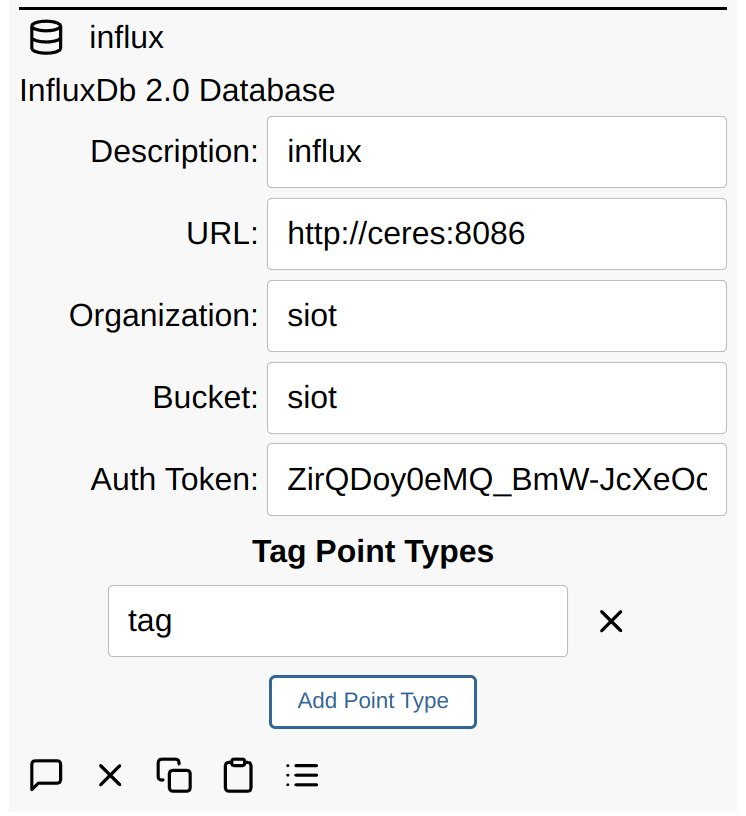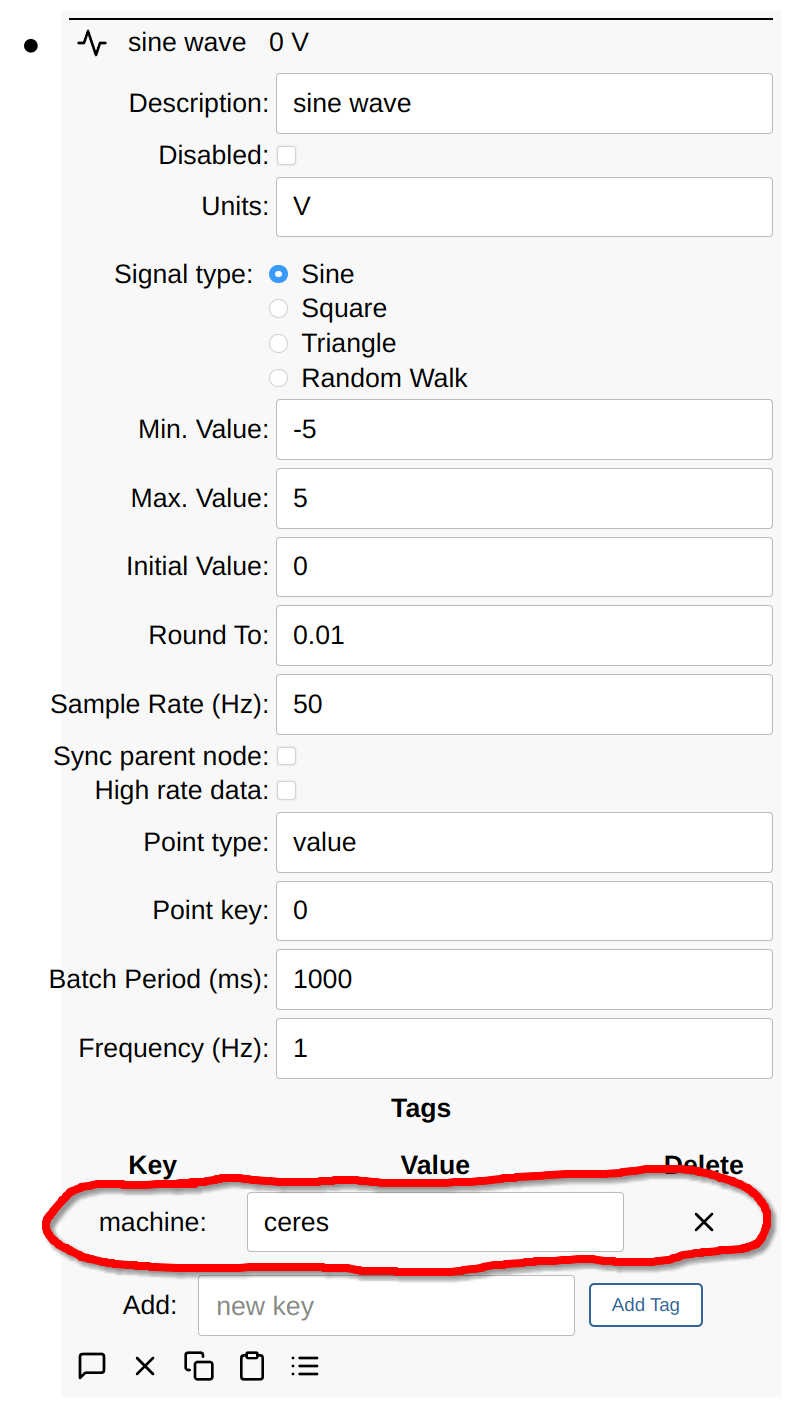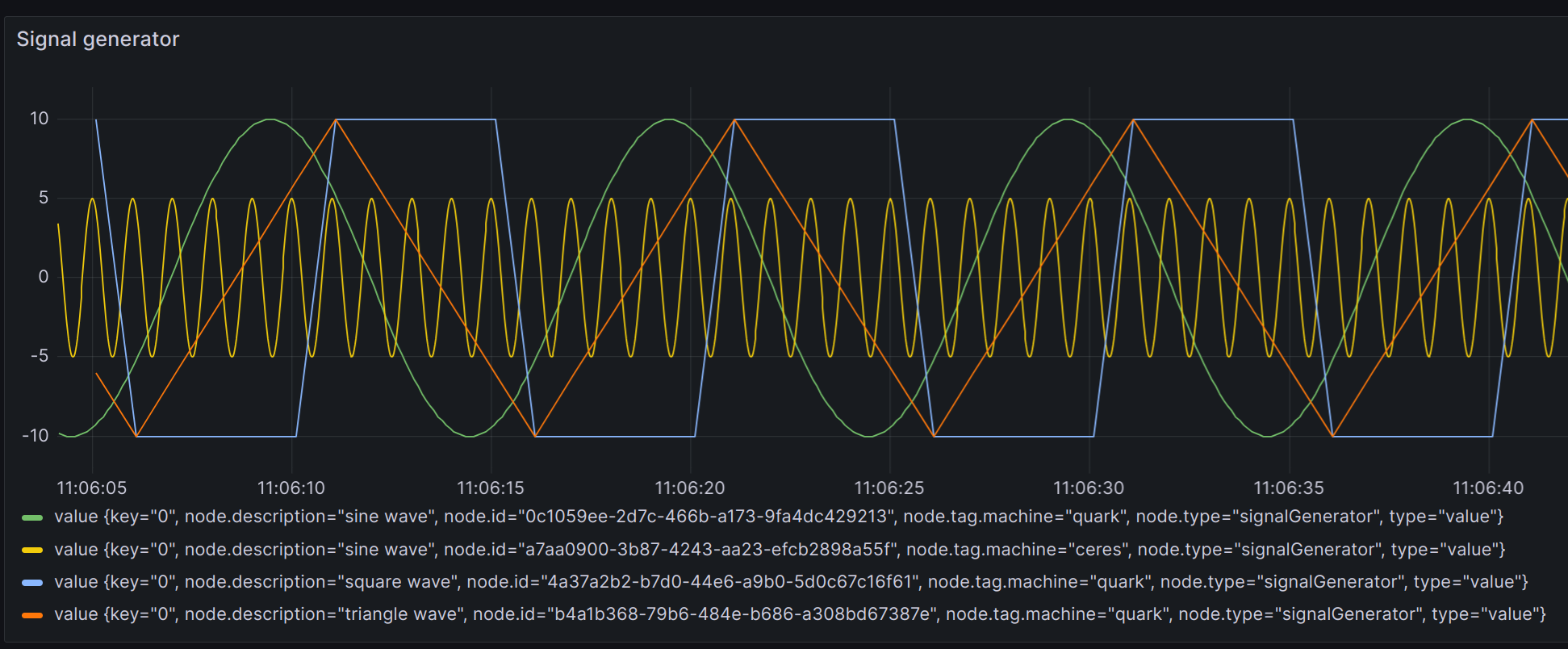Database Client
The main SIOT store is SQLite. SIOT supports additional database clients for purposes such as storing time-series data.
InfluxDB 2.x
Point data can be stored in an InfluxDB 2.0 Database by adding a Database node:

The following InfluxDB tags are added to every point:
node.id(typically an UUID)node.type(extracted from the type field in the edge data structure)node.description(generated from thedescriptionpoint from the node)
Custom InfluxDB Tags
Additional tag tag points can be specified. The DB client will query and cache
node points of these types for any point flowing through the system and then
InfluxDB tags in the format: node.<point type>.<point key>. In the below
example, we added a machine tag to the signal generator node generating the
data.

When the tag field is specified in the database node, this machine tag is
now added to the Influx tags for every sample.
valueandtypeand fields from the pointnode.descriptionandnode.typeare automatically addednode.tag.machinegot added because thetagpoint was added to the list of node points that get added as tags.

See the Graphing documentation for information on how to automatically map tags to graph labels.
InfluxDB indexes tags, so generally there is not a huge cost to adding tags to samples as the long string is only stored once.
Victoria Metrics
Victoria Metrics supports the InfluxDB version 2 line protocol; therefore, it can be used for numerical data. Victoria Metrics does not support storing strings.